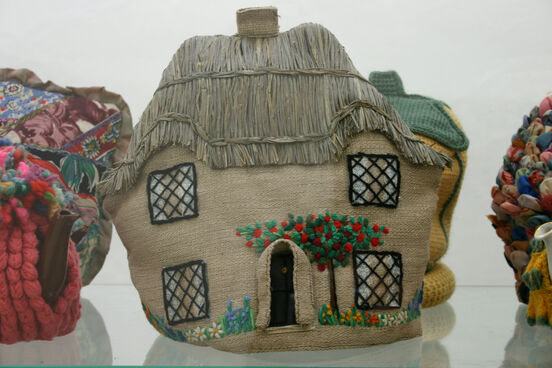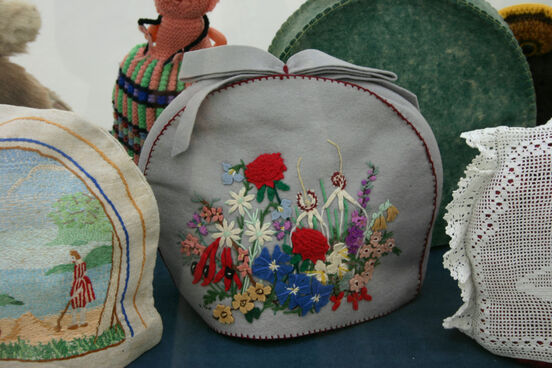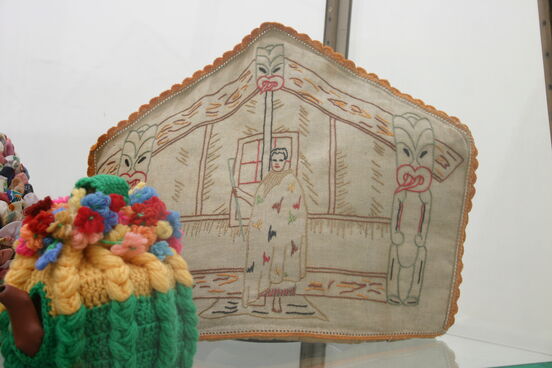Rosemary McLeod's book Thrift to Fantasy: Home Textile Crafts of the 1930s-1950s which celebrates domestic handcraft and the spirit of 'making do' has been a 2005 best seller. A selection of Rosemary's own collection of tea cosies made from materials ranging from wool to kangaroo skin features in the vault.
Tea cosies form an important part of my home textile crafts collection, which emphasises textile handwork done by women from the 1930s to the 1950s, the last great period of "making do". Much of this handwork is familiar to us, but has been overlooked and underestimated, partly because it is traditional women's work, and also because it relates to domestic life, while we've preferred to value achievements in the wider world.
Tea cosies in particular are a part of the record of the rituals of domestic life, when peoples' incomes were restricted, and the drama of life was largely played out within the home. Small events became ceremonial, and the housewife a kind of presiding priestess. Cosies are often playful statements of thrift and ingenuity, exploring every creative means a woman had at hand in textile crafts. Women's magazines published patterns for them in infinite variety. They are also practical; they help to keep tea hot. Tea times - coffee was yet to become popular - varied in formality. For everyday life, and tea in the kitchen, women used knitted cosies in an endless variety of colours and stitches, often made from scrap ends of wool from the family's knitted garments.
For tea in the parlour, and when entertaining visitors, a housewife would present a fancier cosy, embroidered, appliqued, crocheted, patchworked - even made from kangaroo skin. They must have been talking points at the table, a source of compliments as well as humour. Cosies were often colour co-ordinated to match a hostess's best china. They were integral to an elegant teatime spread of both home-made embroideries and home-baked treats, showing the range of a woman's accomplishments, and harking back to craft traditions in our countries of origin. They are humble emblems of pākehā colonial culture, and relics of the former lives of women.
- Rosemary McLeod


